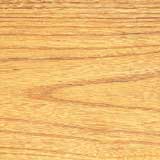|
Hackberry, Celtis occidentalis, often known as sugarberry, is a member of the Elm family and is found in the Eastern United States. This tree is very fast growing and can reach a height of 130 feet. It is found in Tennessee and east across the United States into Missouri and Kansas.
The Hackberry grows most abundantly and of the greatest size in rich alluvial land but it does thrive in various soil types. The Hackberry is a superior tree that withstands heat, drought, wind, and alkaline soils. The Hackberry tree displays a large spreading crown with red-orange fruit in the fall. Hackberry has low water requirements and a high tolerance to salt and alkali soils. This yellowish-gray to light-brown wood has grains that can be either straight or interlocked. The rather unusual grain effect has made it popular for paneling and novelty furniture treatments. The heartwood is commonly darker. The structure of Hackberry resembles Elm. The wood of the Hackberry is heavy but is soft and weak. It is often used as a source of fuel. Because the wood decays quickly when exposed to heavy moisture, it is not suitable for exterior uses. Most Hackberry is cut into lumber. Used mostly in furniture, cabinets, paneling, plaques, truck flooring, millwork, doors and molding, this hardwood is very similar to sapwood and hardwood. Furniture manufacturers have found that Hackberry makes very attractive and substantial tables and chairs. Its stability and excellent gluing properties also make it a very good core stock material. It has been very popular for the manufacture of kitchen cabinets and is used somewhat for turnings and carvings. Because it has a fairly high shrinkage, Hackberry is most suitable in small, short pieces. It is often used in farm tools, athletic equipment, crates, boxes and traditionally, in the South, in church pews. The lack of odor or taste has led to its adoption by makers of candy and cheese containers, lard and butter tubs, and fruit and berry baskets. While it is not too well known to the woodworking industry, it has many good qualities which merit consideration where cost is a factor. Hackberry is medium hard but not strong enough for building construction. It takes a very good polish. |

